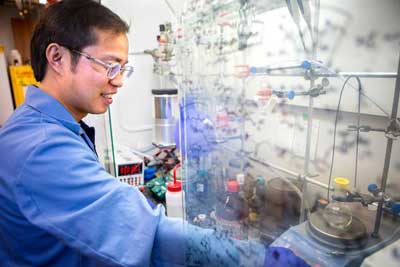| Aug 11, 2017 |
Chemists use electrochemistry to amp up drug manufacturing
|
|
(Nanowerk News) Give your medicine a jolt. By using electrochemistry, future pharmaceuticals - including many of the top prescribed medications in the United States - soon may be easily scaled up to be manufactured in a more sustainable way (Science, "Metal-catalyzed Electrochemical Diazidation of Alkenes").
|
 |
| Song Lin, assistant professor of chemistry at Cornell University. Lin and his team have developed a technique that creates vicinal diamines more easily and without the toxic waste. (Image: Cornell University)
|
|
Currently, making pharmaceuticals involves creating complex organic molecules that require several chemical steps and intense energy. The process also spawns copious amounts of environmentally harmful - and usually toxic - waste.
|
|
At the heart of many popular pharmaceuticals are vicinal diamines, which contain carbon-nitrogen chemical bonds, a bioactive foundation for the medicine. According to Song Lin, assistant professor of chemistry, many widely consumed therapeutic agents have these diamines, including prescription-strength flu medicines, penicillin and some anti-cancer drugs.
|
|
Lin and his team have developed a technique that creates vicinal diamines more easily and without the toxic waste. The process uses electricity and chemistry - electrochemistry - and then employs Earth-abundant manganese.
|
|
"The current process generates a lot of waste product to make this chemical bond. When you can create a product electrosynthetically, rather than chemically, it is much more straightforward and sustainable," Lin said.
|

